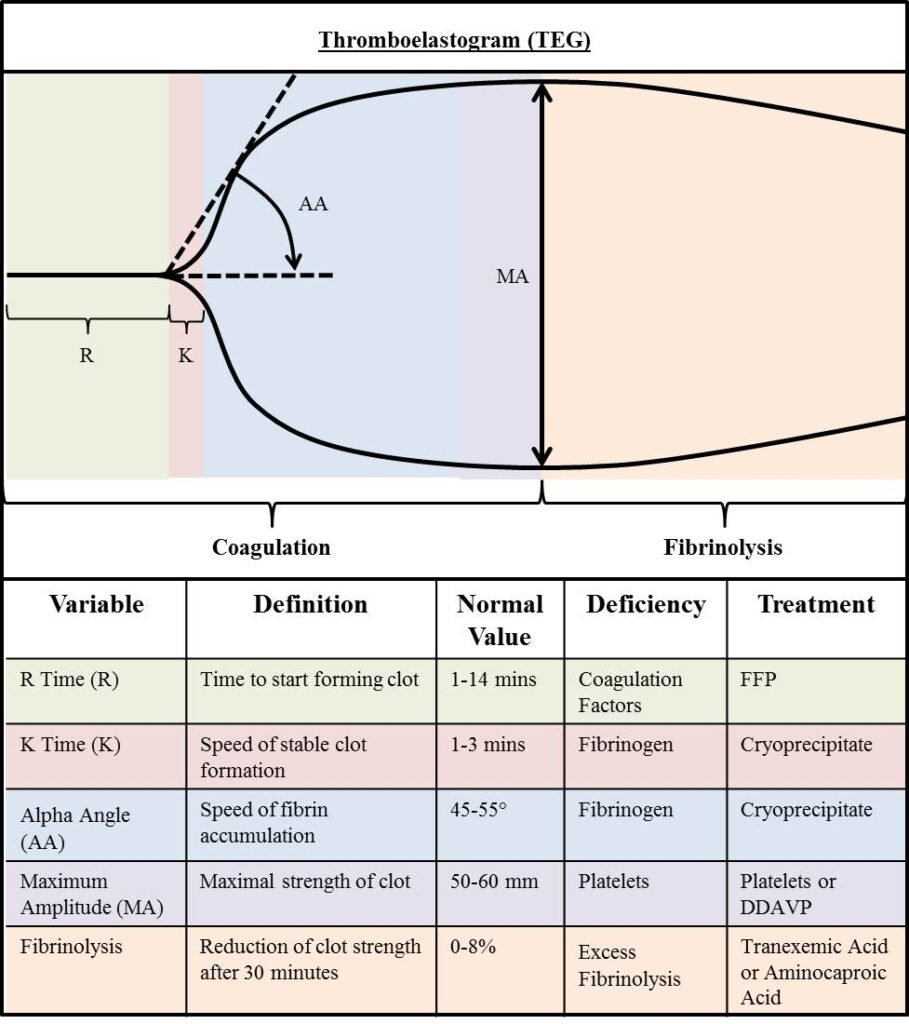A Comprehensive Analysis of Coagulation Dynamics and Clinical Applications
John Bellamente, MD
Published December 2, 2024 | Clinics in Medical Education
Issue 4 | Volume 1 | November 2024
A 72 yo male is undergoing a CABG. At the end of the procedure surgeon is concerned about diffuse bleeding. You decide to send a TEG sample. What is the most likely deficiency here?

The interpretation of TEG shows platelet deficiency: MA of the Rapid TEG (CRT) test is low. The functional fibrinogen (CFF) MA is normal. These results are suggestive of a platelet deficiency.
What is Thromboelastography (TEG)?
Traditional coagulation tests do not show the mechanical properties of clot over time because PT and PTT both terminate at low thrombin levels and before fibrin is polymerized. TEG provides a comprehensive view of a hemostatic profile, assessing the hemostatic potential of whole blood, as compared to a traditional coagulation monitoring. TEG measures viscoelasticity of whole blood from initiation of fibrin formation to maximal platelet clot strength and through fibrinolysis.
Which parameters are used to measure clot strength?
TEG measures clot strength over time, focusing on:
- Clot rate (R, in mins) – time it takes for first measurable clot to form.
- Clot strength (max. amplitude MA, in mm) – strength of the clot.
- Clot stability (lysis LY30, in %) – breakdown of the clot.
Graphical tracing and numerical results are reported for each measurement and results are highlighted orange if they fall outside the reference range.
In order to assess the hemostatic properties of citrated blood samples,TEG uses 4 different assays/ reagents simultaneously: CK,CKH,CRT and CFF.
Citrated Kaolin (CK): An intrinsic pathway activated assay identifies underlying hemostatic characteristics and risk of bleeding or thrombosis.
Citrated Kaolin with Heparinase (CKH): Eliminates the effect of heparin in the test sample and used in conjunction with Kaolin assessed the presence of systemic heparin.
Citrated Rapid TEG (CRT): An intrinsic and extrinsis pathway activated assay speeds the coagulation properties.
Citrated Functional Fibrinogen (CFF): Used in conjunction with Kaolin or RapidTEG can assess relative contribution of platelets and fibrin to overall clot strength.
The framework for interpreting TEG results is summarized in the image below.


